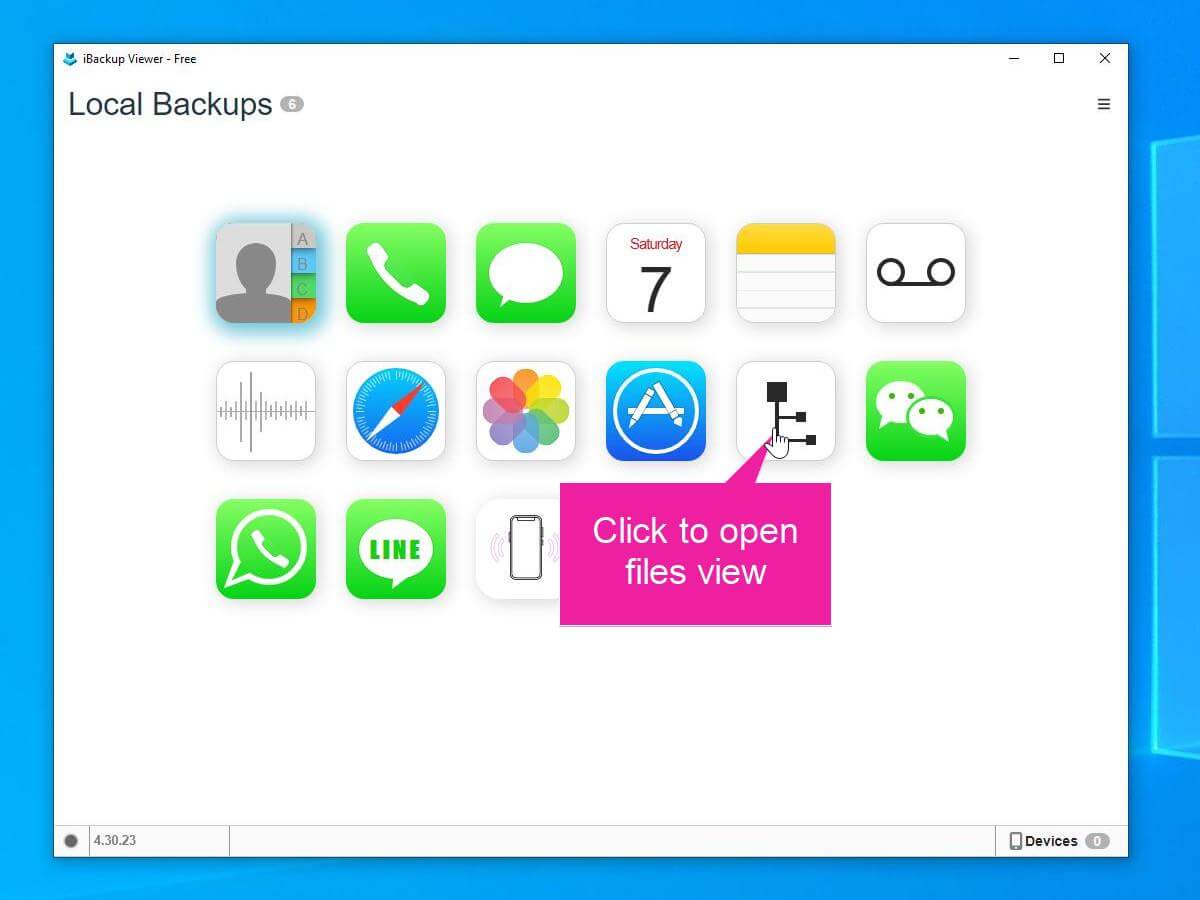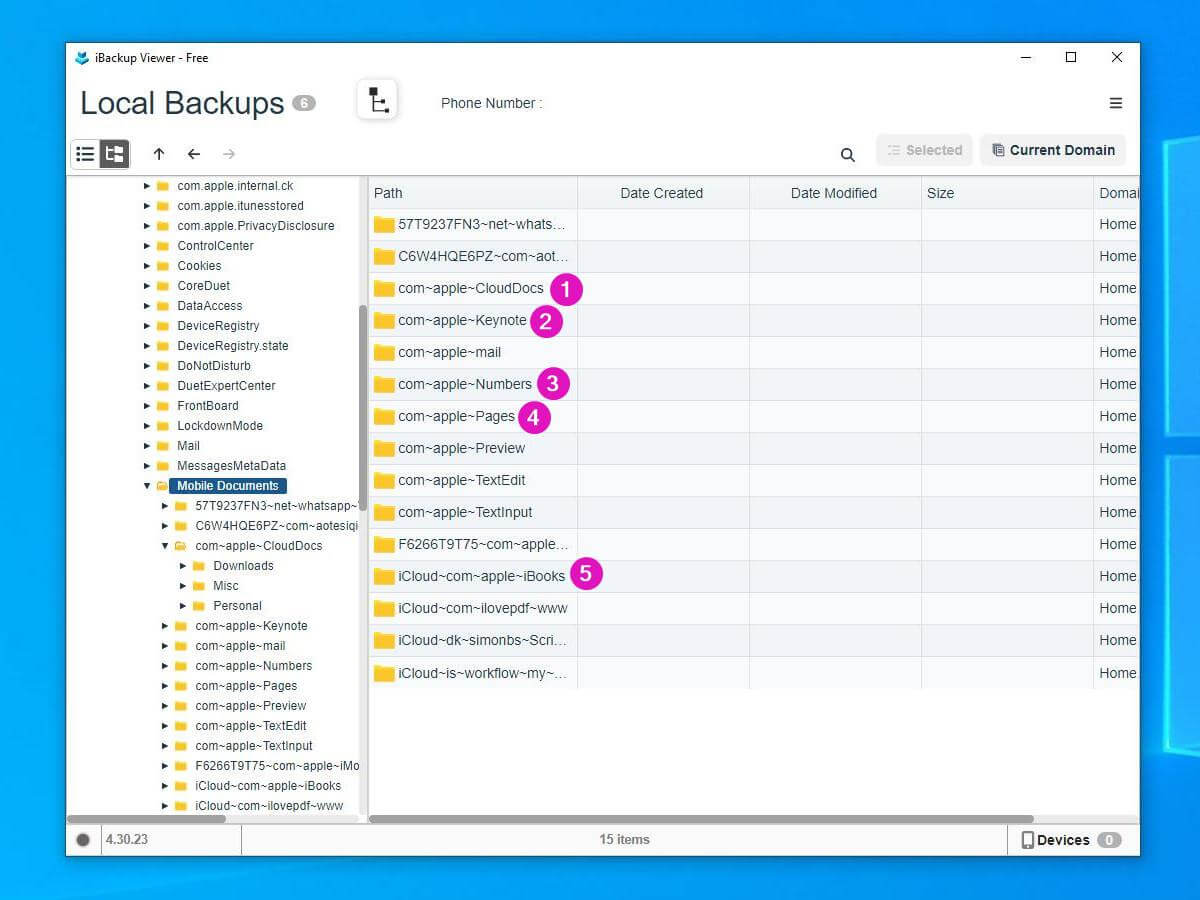The tool to recover iPhone data and extract contacts, messages, calendars, recordings and photos from iOS backups created by iTunes or other applications.
Understanding the File Structure of Mobile Documents in iPhone Backups
Nowadays, most of our important files are automatically synced with iCloud, making them easily accessible across all our devices. However, there are times when we need to recover specific versions of files stored in local backups. This could be due to accidental deletions, file corruption, or simply needing an older version of a document.
This tutorial aims to guide you through the process of recovering these files from your iPhone backups, understanding the file structure within these backups.
To get started, simply download the iBackup Viewer for macOS or Windows and install, then launch it on your computer. Click on the backup thumbnail you are interested in, from there, you'll see an interface that looks like this.




As demonstrated in the screenshot above, there are a list of folders with names in form of "com-company-AppName", the most popular native Apps from Apple are flagged here for example, those are:
By clicking on these folders in the left side folder tree or double clicking in the right side list view, you can preview the contents and select the files you wish to recover.
In conclusion, while iCloud provides a convenient way to sync and store your file, it's essential to have a backup plan in place for situations where you need to retrieve specific versions of your files. By using tools like iBackup Viewer and understanding the file structure of mobile documents in iPhone backups, you can breathe a sigh of relief knowing that you're protected against data loss.